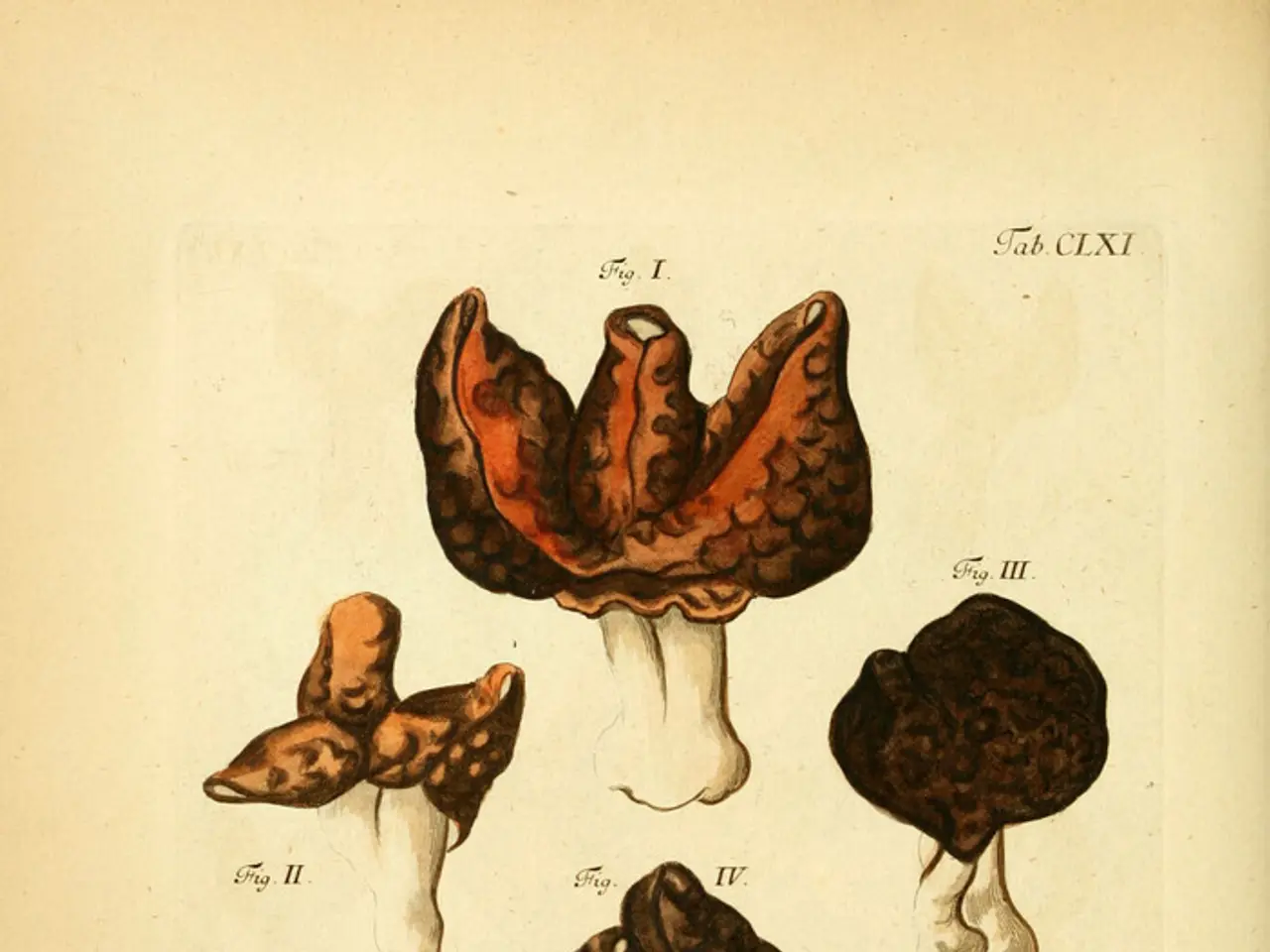Rainy Conditions May Pose Risks for Mushroom Collectors, with Potential for Both Abundance and Toxic Species Emergence
Mushroom Foraging in Germany: A Cautionary Tale
With the summer rain showers providing ideal conditions for mushroom growth, many nature enthusiasts in Germany are venturing into the forests to collect their own edible fungi. However, a word of caution is in order, as not all mushrooms are safe to eat.
Dana Lafuente, head of the Brandenburg Mushroom School, emphasises the importance of understanding the basics of mushroom identification. "The fruiting bodies of mushrooms are their sexual organs, and they produce them when the conditions are right," she explains. "Water is essential for mushrooms to grow, and there has been plenty of it, according to Lafuente."
However, caution is necessary when it comes to identifying and consuming mushrooms. Lutz Helbig, a mushroom advisor from the district of Oberspreewald-Lausitz, warns against using apps for mushroom determination, as they can lead to mistakes that may be fatal. "The most common and dangerous poisonous mushroom in Germany is the Death Cap mushroom (Amanita phalloides)," he says. This species accounts for about 90% of all fatal mushroom poisonings in the country, primarily due to its potent toxins that cause severe liver failure several hours after ingestion.
The Death Cap mushroom can be easily mistaken for edible mushrooms, leading to accidental poisonings, especially among people unfamiliar with local species. Its poison acts with a delay, with initial symptoms mimicking a gastrointestinal infection (nausea, vomiting, diarrhea), but then causing irreversible liver damage, potentially requiring a liver transplant.
Other poisonous mushrooms present in Germany include the Fly agaric (Amanita muscaria), Golden cluster (Tricholoma equestre), Poison funnel (Clitocybe acromelalga), and Sweat mushroom (Inocybe asterospora). While these species may cause less severe or non-lethal symptoms, it is still advisable to avoid them.
Helbig advises beginners to collect boletes, as there are no deadly poisonous species among them. For those who are unsure, he recommends wrapping the mushroom with its roots and bulb in newspaper and taking it to a mushroom consultation. If consumed, immediate medical attention is necessary, as without treatment, it can be fatal.
It's important to note that the body cannot break down the poison from the panther mushroom or the green knobbed club on its own. A simple photo does not provide enough information for mushroom determination, and a ventilated basket should be used for mushroom collection, not a plastic box or bag.
Mushroom expert Wolfgang Bivour from Potsdam notes a large number of summer porcini, pine boletes, morels, various species of boletes, giant puffballs, honey mushrooms, and champignons are available. However, he warns against eating any mushroom with the slightest doubt.
In conclusion, while mushroom foraging can be a rewarding and enjoyable pastime, it is crucial to approach it with caution and knowledge. Always remember that when in doubt, it's better to leave the mushroom in the forest.
- In the realm of environmental-science and health-and-wellness, it's essential for foragers to recognize that mushrooms, being part of the lifestyle, have sexual organs called fruiting bodies and need water to grow, making the damp German forests this season an attractive hunting ground.
- In the discussion of mental-health and safety, Lutz Helbig, a district mushroom advisor, raises a concern about the reliance on apps for mushroom identification, suggesting that such reliance can lead to potentially fatal mistakes, as the Death Cap mushroom (Amanita phalloides), a common and dangerous poisonous mushroom, can easily be mistaken for edible varieties.
- While food-and-drink enthusiasts enjoy the abundance of summer porcini, pine boletes, morels, various species of boletes, giant puffballs, honey mushrooms, and champignons, Wolfgang Bivour, a mushroom expert from Potsdam, stresses the importance of not consuming any mushroom with the slightest doubt, as some mushrooms, like the panther mushroom and the green knobbed club, contain poison that the body cannot break down and require immediate medical attention if ingested.





